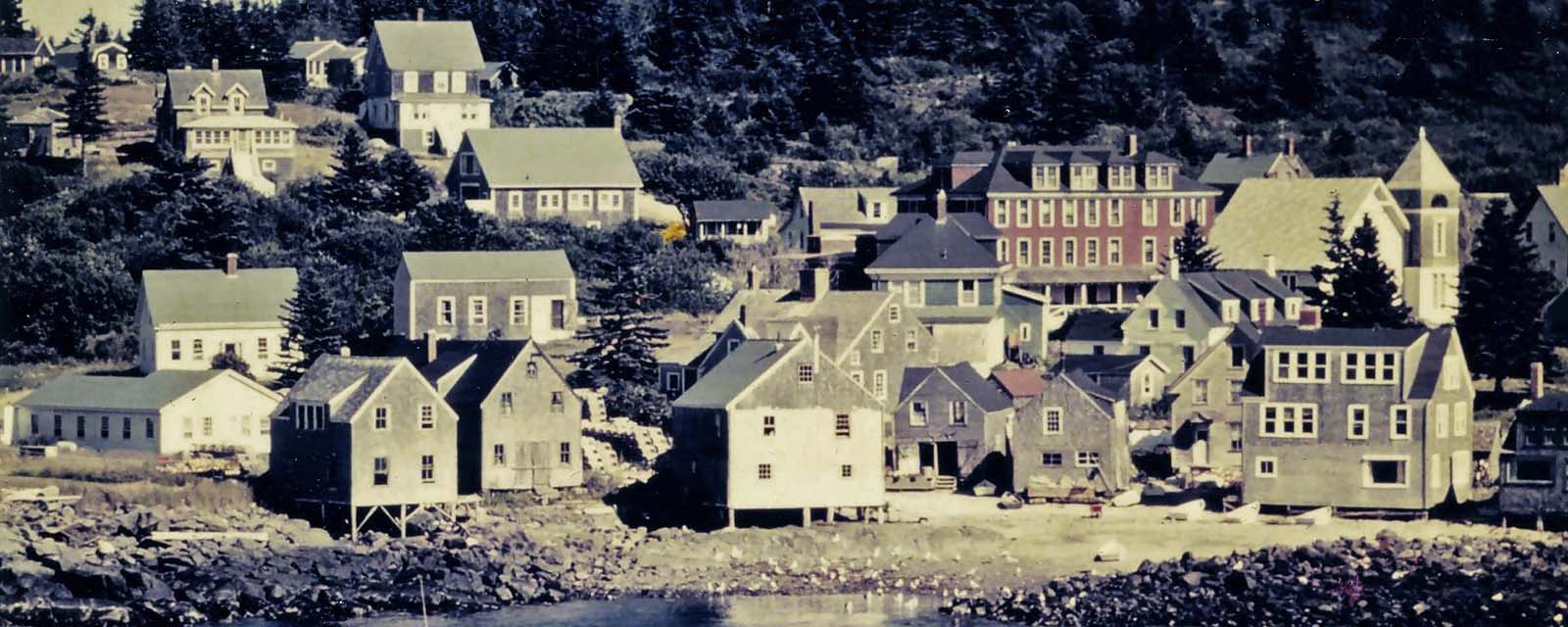
The Setting:
“I like places where the forces of nature are in active operation..: Monhegan Island, Maine–the drowned coast, the region of fog, grandeur and intimacy, the edge of land, and the sea.” -Reuben Tam from A Sense of Place: The Artist and the American Landscape. Alan Gussow.
Approximately 10 miles off mid-coast Maine, Monhegan Island in 1950 was primarily a fishing village. At the end of World War II, Monhegan entered a period of growth and prosperity. The community flourished as young people began building careers and families. Summer visitors came to this seemingly isolated island seeking tranquility and a simple way of life. Year-round residents responded, offering accommodations and other services for tourists.
Monhegan had been a destination for artists since the 1850s, and the islands’ reputation as an art colony had steadily grown during the intervening 100 years. In contrast to the majority of artists that had been visiting Monhegan since the 1800’s, the young artists that discovered the island after the war were moving away from the representational landscape.
After the Second World War the number of Jewish visitors to the island increased, particularly among the artists. The unstructured social activity, affordability, supportive artist community and inspiring landscape made Monhegan an attractive destination in the postwar era. While some of these visitors did encounter lingering undercurrents of antisemitism among members of the old guard, the majority of of island residents, both summer and winter, were welcoming to all.

